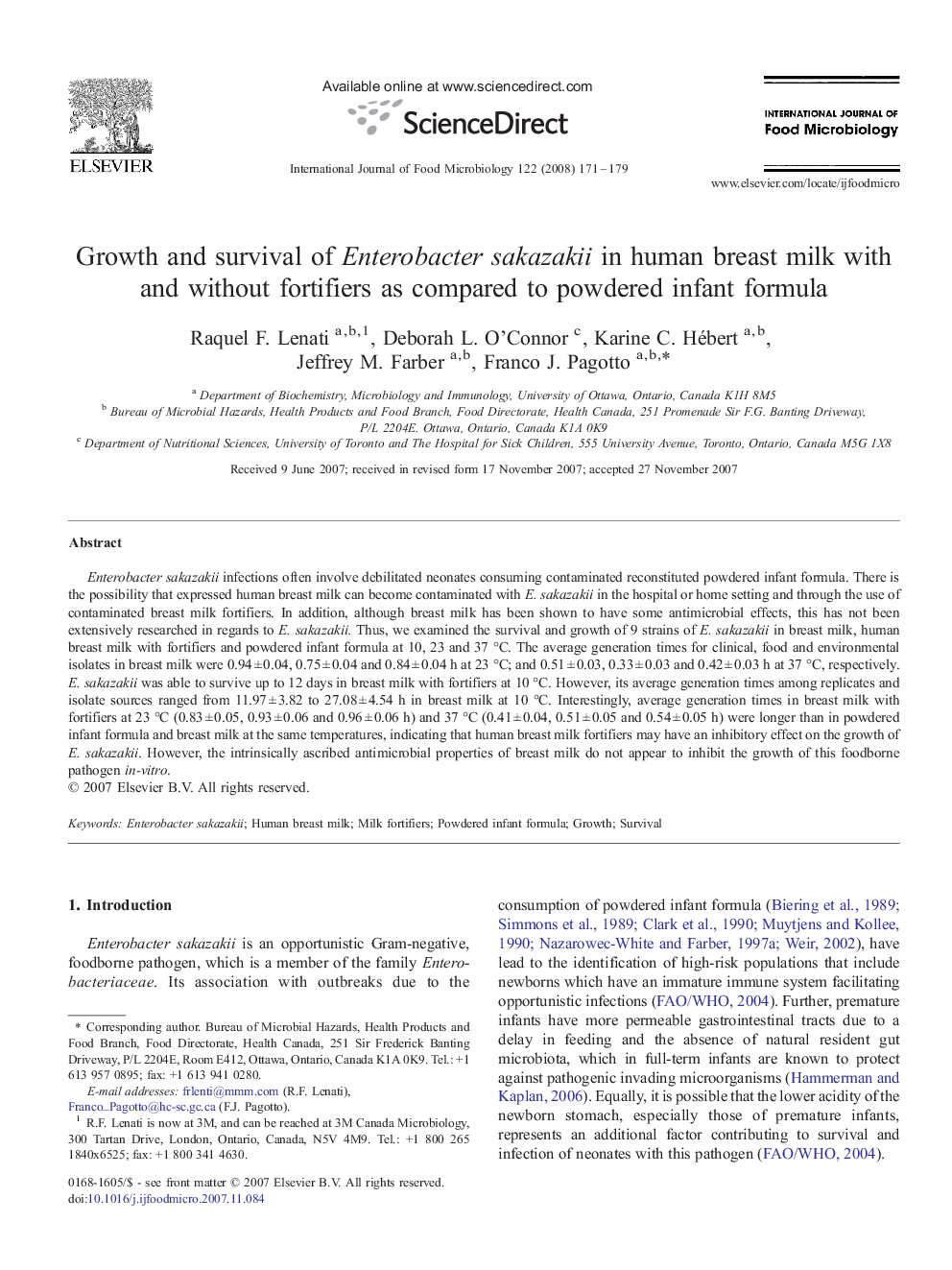| Article ID | Journal | Published Year | Pages | File Type |
|---|---|---|---|---|
| 4369529 | International Journal of Food Microbiology | 2008 | 9 Pages |
Enterobacter sakazakii infections often involve debilitated neonates consuming contaminated reconstituted powdered infant formula. There is the possibility that expressed human breast milk can become contaminated with E. sakazakii in the hospital or home setting and through the use of contaminated breast milk fortifiers. In addition, although breast milk has been shown to have some antimicrobial effects, this has not been extensively researched in regards to E. sakazakii. Thus, we examined the survival and growth of 9 strains of E. sakazakii in breast milk, human breast milk with fortifiers and powdered infant formula at 10, 23 and 37 °C. The average generation times for clinical, food and environmental isolates in breast milk were 0.94 ± 0.04, 0.75 ± 0.04 and 0.84 ± 0.04 h at 23 °C; and 0.51 ± 0.03, 0.33 ± 0.03 and 0.42 ± 0.03 h at 37 °C, respectively. E. sakazakii was able to survive up to 12 days in breast milk with fortifiers at 10 °C. However, its average generation times among replicates and isolate sources ranged from 11.97 ± 3.82 to 27.08 ± 4.54 h in breast milk at 10 °C. Interestingly, average generation times in breast milk with fortifiers at 23 °C (0.83 ± 0.05, 0.93 ± 0.06 and 0.96 ± 0.06 h) and 37 °C (0.41 ± 0.04, 0.51 ± 0.05 and 0.54 ± 0.05 h) were longer than in powdered infant formula and breast milk at the same temperatures, indicating that human breast milk fortifiers may have an inhibitory effect on the growth of E. sakazakii. However, the intrinsically ascribed antimicrobial properties of breast milk do not appear to inhibit the growth of this foodborne pathogen in-vitro.
